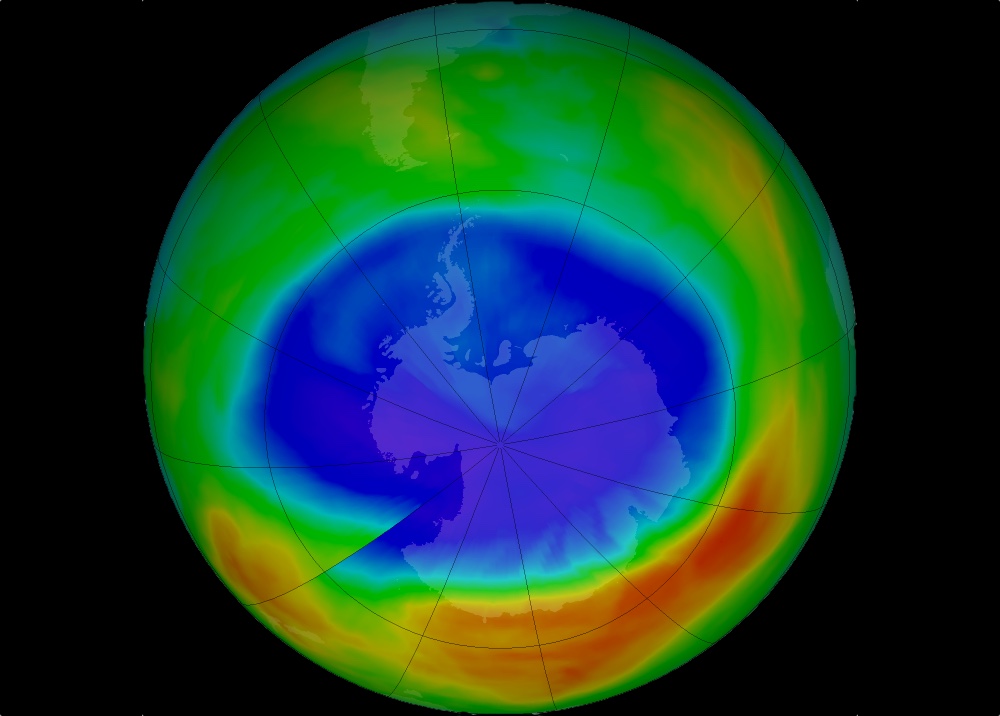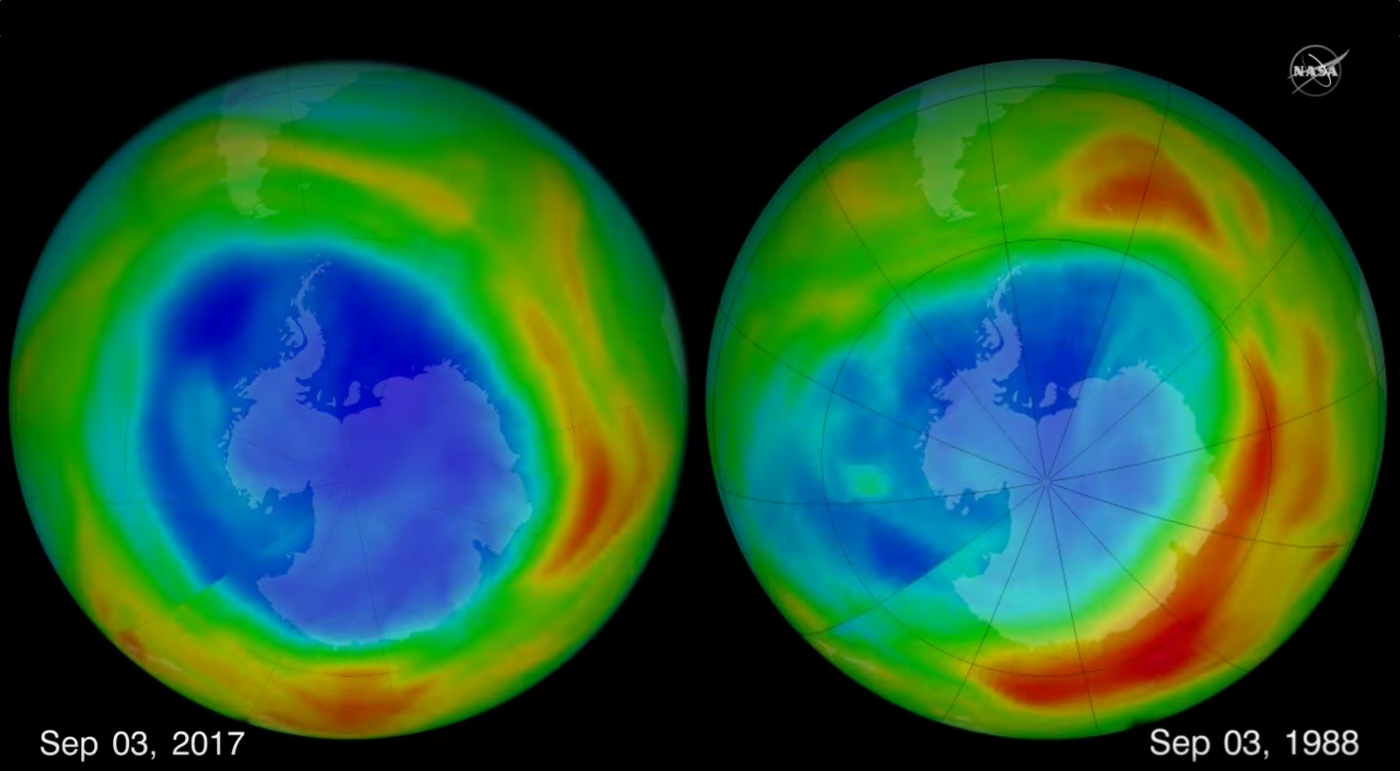Good News on Warming: Ozone Hole Is Smallest Since 1988

Higher temperatures over Antarctica this year shrank the hole in the ozone layer to the smallest it's been since 1988.
The ozone hole is a depletion of ozone gas (O3) in the stratosphere above Antarctica. The three-oxygen molecule is toxic at ground level, but high in the atmosphere, it deflects dangerous ultraviolet rays from reaching Earth's surface.
In 1985, scientists first detected the hole in the ozone layer and realized it was being caused by man-made chlorine and bromine, often found in chlorofluorocarbons (CFCs), compounds used as refrigerants. In 1987, the Montreal Protocol initiated the phase-out of these chemicals. As they gradually leave the atmosphere, the ozone hole will heal, and scientists expect it to return to 1980s size by 2070.
Natural variability affects this healing year-to-year, however.
"The Antarctic ozone hole was exceptionally weak this year," Paul Newman, chief scientist for Earth Sciences at NASA's Goddard Space Flight Center in Greenbelt, Maryland, said in a statement. "This is what we would expect to see given the weather conditions in the Antarctic stratosphere." [Infographic: Earth's Atmosphere Top to Bottom]
Weather and ozone
In the upper atmosphere, CFCs break apart, freeing chlorine to react with ozone molecules, a reaction that creates oxygen and chlorine monoxide. Similar reactions occur with bromine. Polar stratospheric clouds, which form in frigid temperatures, speed up this process by providing surfaces for the reactions to occur on. That's why the ozone hole worsens in the Southern Hemisphere winter.

Higher temperatures in the stratosphere, on the other hand, allow ozone to remain more stable in the atmosphere, meaning they keep the ozone hole smaller on a year-to-year basis. This year on Sept. 11, NASA measured the maximum extent of the hole at 7.6 million square miles (19.6 million square kilometers), 2.5 times the size of the United States.
Sign up for the Live Science daily newsletter now
Get the world’s most fascinating discoveries delivered straight to your inbox.
That was smaller than in 2016, when the maximum extent was 8.9 million square miles (22.2 million square km), also a below-average size. According to NASA, the average maximum extent of the ozone hole since 1991 has hovered at about 10 million square miles (25.8 million square km).
Historic high
However, scientists said that two years of lower-than-usual ozone hole extent isn't a sign that the ozone layer is healing faster than expected. Instead, it's a side effect of the Antarctic vortex — a low-pressure system that rotates clockwise above the southernmost continent — undergoing a few years of instability and warmth, which prevented the proliferation of polar stratospheric clouds. [Image Gallery: Life at the South Pole]
Using an instrument called a Dobson spectrophotometer, NASA researchers monitor the concentration of ozone over Antarctica on a regular basis. On Sept. 25, the concentration of ozone reached a minimum of 136 Dobson Units, which is the highest minimum since 1988. However, that concentration is still low compared with the 1960s, before man-made compounds created the ozone hole. In that decade, ozone concentrations over Antarctica were between 250 and 350 Dobson Units.
Original article on Live Science.

Stephanie Pappas is a contributing writer for Live Science, covering topics ranging from geoscience to archaeology to the human brain and behavior. She was previously a senior writer for Live Science but is now a freelancer based in Denver, Colorado, and regularly contributes to Scientific American and The Monitor, the monthly magazine of the American Psychological Association. Stephanie received a bachelor's degree in psychology from the University of South Carolina and a graduate certificate in science communication from the University of California, Santa Cruz.










